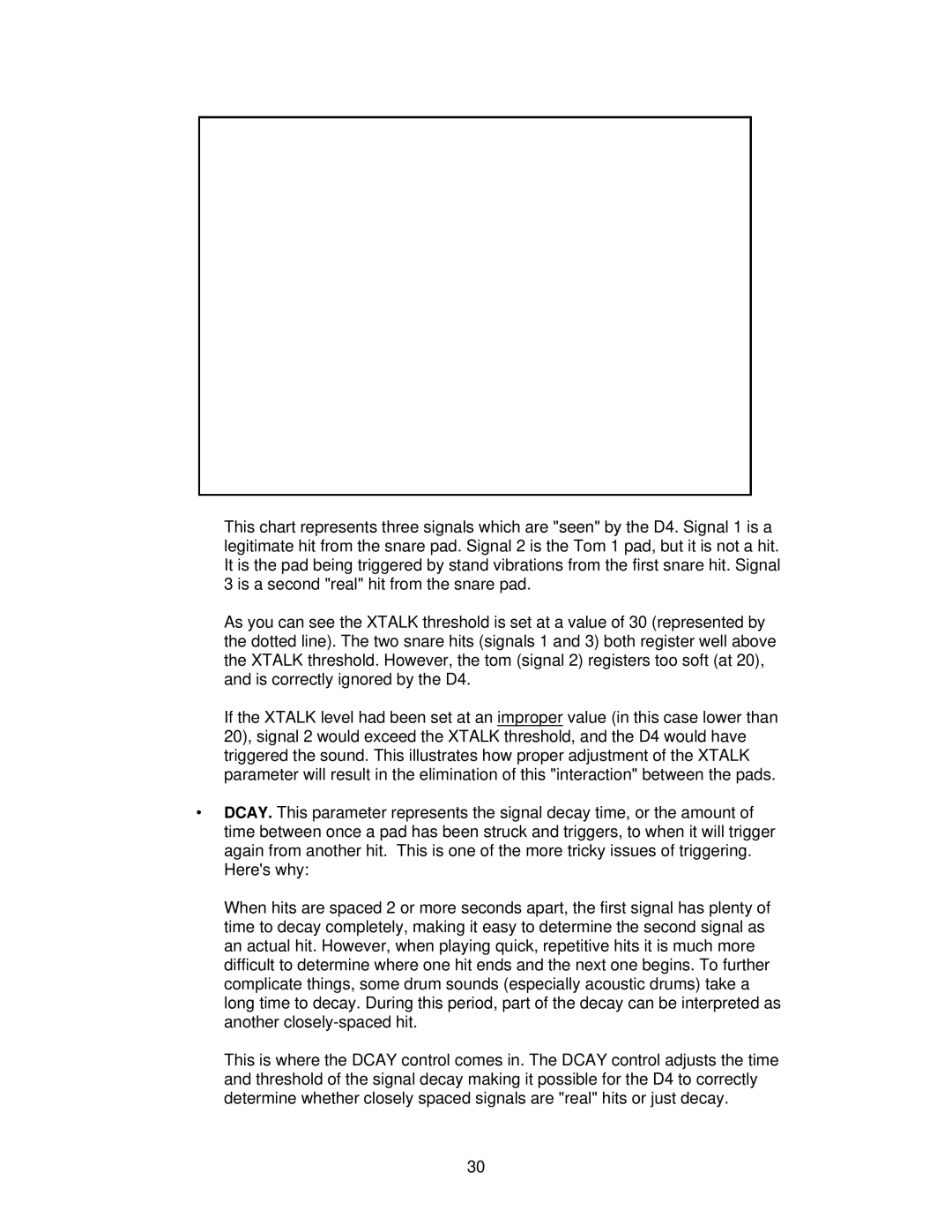
This chart represents three signals which are "seen" by the D4. Signal 1 is a legitimate hit from the snare pad. Signal 2 is the Tom 1 pad, but it is not a hit. It is the pad being triggered by stand vibrations from the first snare hit. Signal 3 is a second "real" hit from the snare pad.
As you can see the XTALK threshold is set at a value of 30 (represented by the dotted line). The two snare hits (signals 1 and 3) both register well above the XTALK threshold. However, the tom (signal 2) registers too soft (at 20), and is correctly ignored by the D4.
If the XTALK level had been set at an improper value (in this case lower than 20), signal 2 would exceed the XTALK threshold, and the D4 would have triggered the sound. This illustrates how proper adjustment of the XTALK parameter will result in the elimination of this "interaction" between the pads.
•DCAY. This parameter represents the signal decay time, or the amount of time between once a pad has been struck and triggers, to when it will trigger again from another hit. This is one of the more tricky issues of triggering. Here's why:
When hits are spaced 2 or more seconds apart, the first signal has plenty of time to decay completely, making it easy to determine the second signal as an actual hit. However, when playing quick, repetitive hits it is much more difficult to determine where one hit ends and the next one begins. To further complicate things, some drum sounds (especially acoustic drums) take a long time to decay. During this period, part of the decay can be interpreted as another
This is where the DCAY control comes in. The DCAY control adjusts the time and threshold of the signal decay making it possible for the D4 to correctly determine whether closely spaced signals are "real" hits or just decay.
30
